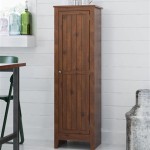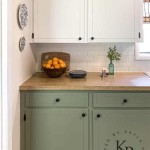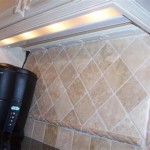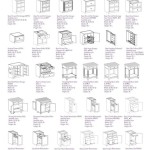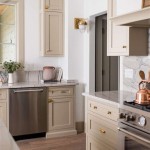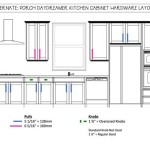Can I Paint Over Already Painted Cabinets? A Comprehensive Guide
The possibility of repainting already painted cabinets is a common consideration for homeowners seeking to refresh their kitchen or bathroom without the significant expense and disruption of replacing the existing cabinetry altogether. The answer to the question of whether it’s feasible is generally affirmative, but the success of the endeavor hinges on meticulous preparation, the selection of appropriate materials, and adherence to proper painting techniques. Neglecting any of these elements can result in a subpar finish that is prone to chipping, peeling, or inadequate adhesion.
Painting over existing paint introduces several challenges not encountered when painting bare wood. Previous coatings can create compatibility issues if the new paint is not designed to adhere properly. Furthermore, surface imperfections, such as scratches, dents, or accumulated grease and grime, must be addressed prior to painting to ensure a smooth and durable final result.
Key Point 1: Assessing the Existing Paint and Cabinet Condition
Before embarking on the repainting process, a thorough assessment of the existing paint and cabinet condition is paramount. This assessment will dictate the necessary preparatory steps and inform the selection of appropriate painting products. The examination should focus on several key aspects:
First, determine the type of paint currently on the cabinets. While this can sometimes be difficult to ascertain without specialized testing, observing the paint’s properties can provide clues. Oil-based paints tend to be harder and more durable but also more brittle and prone to yellowing over time. Latex or water-based paints are generally more flexible and resistant to cracking but may not be as durable as oil-based counterparts. Performing a simple adhesion test can help to assess the integrity of the existing paint layer.
To conduct an adhesion test, score the existing paint in a small, inconspicuous area using a utility knife, creating a crosshatch pattern. Apply a piece of painter’s tape firmly over the scored area and then quickly peel it off. If significant amounts of paint come off with the tape, it indicates poor adhesion, and more extensive preparation, such as stripping the old paint or applying a bonding primer, will be necessary. If only a minimal amount of paint comes off, the adhesion is likely sufficient to proceed with repainting after proper cleaning and priming.
Next, examine the cabinets for any signs of damage, such as cracks, dents, scratches, or water damage. These imperfections must be repaired before painting to ensure a smooth and uniform finish. Fill small cracks and dents with wood filler, allow it to dry completely, and then sand it smooth. Water-damaged areas should be thoroughly dried and treated with a mildewcide if necessary. Consider replacing severely damaged cabinet doors or drawer fronts rather than attempting to repair them.
Finally, assess the overall cleanliness of the cabinets. Kitchen cabinets, in particular, tend to accumulate grease, grime, and food splatters over time. These contaminants can prevent the new paint from adhering properly and must be thoroughly removed before proceeding. A strong degreaser specifically designed for kitchen surfaces is recommended for this purpose.
Key Point 2: Preparation – The Foundation for a Successful Paint Job
Proper preparation is arguably the most critical aspect of repainting cabinets. It directly influences the adhesion, durability, and overall appearance of the finished product. Skimping on preparation will inevitably lead to problems down the line, such as peeling, chipping, or an uneven finish. The preparation process typically involves the following steps:
Removal: Begin by removing all cabinet doors, drawers, and hardware, including hinges, knobs, and pulls. This will make it easier to clean, sand, and paint the cabinets. Label each door and drawer with its corresponding location to ensure proper reinstallation. Store the hardware in a safe place to prevent loss or damage.
Cleaning: Thoroughly clean all cabinet surfaces with a degreasing cleaner to remove grease, grime, and other contaminants. Use a scrub brush or sponge to agitate the cleaner and pay particular attention to areas around handles and hinges where grease tends to accumulate. Rinse the cabinets thoroughly with clean water and allow them to dry completely.
Sanding: Sanding creates a slightly roughened surface that provides better adhesion for the new paint. Use a medium-grit sandpaper (e.g., 120-180 grit) to lightly sand all cabinet surfaces, focusing on areas with glossy finishes. The goal is not to remove the existing paint entirely, but rather to create a “tooth” for the primer to grip onto. After sanding, remove all sanding dust with a tack cloth or damp cloth. Be sure to wear a dust mask during sanding to protect yourself from inhaling harmful particles.
Priming: Applying a primer is essential for achieving a durable and uniform finish, especially when painting over existing paint. Primer helps to block stains, seal the surface, and provides a consistent base for the topcoat. Choose a high-quality primer that is specifically designed for cabinets. Oil-based primers are generally more effective at blocking stains and providing better adhesion, but they require more cleanup and have a stronger odor. Water-based primers are easier to clean up and have lower VOCs, but they may not be as effective at blocking stains. Consider using a bonding primer, which is designed to adhere to difficult surfaces, such as glossy or laminated cabinets. Apply the primer in thin, even coats using a brush, roller, or sprayer. Allow the primer to dry completely according to the manufacturer’s instructions before proceeding to the next step.
Repairing Imperfections: After priming, examine the cabinets for any remaining imperfections, such as small dents or scratches that were not adequately addressed during the initial preparation. Fill these imperfections with wood filler, allow it to dry completely, and then sand it smooth. Apply another coat of primer over the repaired areas to ensure a uniform surface.
Key Point 3: Painting Techniques and Product Selection
The selection of appropriate paint and the application technique significantly impact the final appearance and durability of the painted cabinets. Choosing a paint specifically formulated for cabinets is crucial. These paints are typically more durable and resistant to scratches, chips, and moisture than general-purpose paints.
Paint Selection: Cabinet-specific paints are available in both latex and oil-based formulations. Latex paints are generally easier to work with, clean up with water, and have lower VOCs. They are also more flexible and less prone to cracking or chipping. Oil-based paints offer superior durability and a smoother finish, but they require mineral spirits for cleanup and have higher VOCs. Alkyd paints, which are oil-modified latex paints, offer a compromise between the two, providing good durability and ease of cleanup. Consider a paint with a satin or semi-gloss finish, as these finishes are easier to clean and more resistant to staining than matte finishes.
Application Techniques: There are several methods for applying paint to cabinets, including using a brush, roller, or sprayer. Brushing is the most common method and is suitable for small projects. Use a high-quality brush designed for the type of paint being used (e.g., a synthetic brush for latex paint and a natural bristle brush for oil-based paint). Apply the paint in thin, even coats, working in the direction of the wood grain. Avoid applying too much paint at once, as this can lead to drips and runs. Rolling is a good option for painting large, flat surfaces. Use a small foam roller to achieve a smooth finish. Spraying provides the most professional-looking finish, but it requires specialized equipment and skills. Use a high-volume, low-pressure (HVLP) sprayer to apply the paint in thin, even coats. Be sure to properly mask off the surrounding area to protect it from overspray.
Multiple Coats: Apply at least two coats of paint to achieve full coverage and a durable finish. Allow each coat to dry completely according to the manufacturer’s instructions before applying the next coat. Lightly sand between coats with fine-grit sandpaper (e.g., 220-320 grit) to remove any imperfections and create a smoother surface for the next coat.
Curing Time: Allow the painted cabinets to cure for several days before reinstalling the hardware and doors. Curing allows the paint to fully harden and develop its maximum durability. Avoid placing heavy objects on the painted surfaces during the curing process.
Reinstallation: Once the paint has fully cured, carefully reinstall the hardware and doors. Use the labels that were applied during the removal process to ensure that each door and drawer is placed in its correct location. Adjust the hinges as needed to ensure that the doors open and close smoothly.
By meticulously following these steps, homeowners can successfully repaint their existing cabinets and achieve a professional-looking finish that enhances the appearance and value of their home.

Avoid These Mistakes How To Paint Cabinets That Are Already Painted Grace In My Space

How To Repaint Painted Cabinets

Do It Yourself Divas Diy How To Paint Over Red Painted Cabinets Walls

Best Practices For Painting Over Painted Cabinets The Morris Mansion

Avoid These Mistakes How To Paint Cabinets That Are Already Painted Grace In My Space

How To Repaint Painted Cabinets

Painted Kitchen Cabinets One Year Later The Palette Muse

How To Paint Kitchen Cabinets From A Diyer Who Has Done It 3 Times

Kitchen Refresh Can You Paint Over Painted Cabinets

The Best Way To Paint Kitchen Cabinets No Sanding Palette Muse
Related Posts

